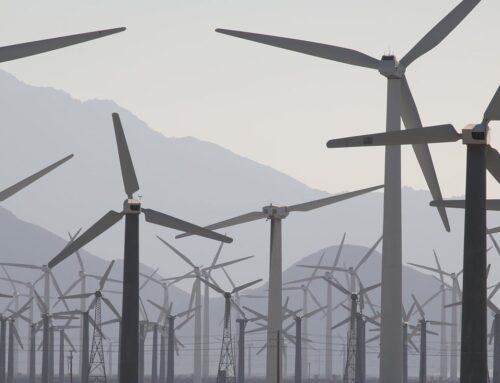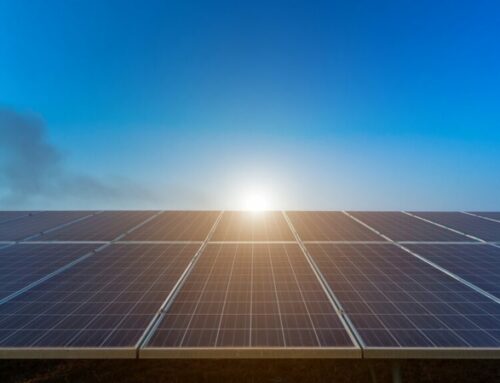Renewables produced 24% of US’s energy in first 10 months of 2024
December 27, 2024
A review by the SUN DAY Campaign of data in two new end-of-the-year reports just released by the Federal Energy Regulatory Commission (FERC) and the U.S. Energy Information Administration (EIA) reveals that the mix of renewable energy sources (i.e., biomass, geothermal, hydropower, solar, wind) is now over 30% of total U.S. utility-scale (i.e., >1 MW) electrical generating capacity and on track to reach 37% by the end of 2027.
In addition, they provided almost a quarter of the nation’s electrical generation during the first ten months of 2024. Further, October was the fourteenth month in a row in which solar was the largest source of new capacity, putting it on track to become the nation’s second-largest source of capacity — behind only natural gas — in three years or sooner.
Renewables were over 90% of new generating capacity in the first ten months of 2024:
In its latest monthly “Energy Infrastructure Update” (with data through October 31, 2024), FERC says 41 “units” of solar totaling 1,970 MW were placed into service in October along with three units of wind (174 MW). Combined they accounted for 99.9% of all new generating capacity added during the month. Natural gas provided the balance — a mere 3 MW.
During the first ten months of 2024, solar and wind added 21,425 MW and 2,799 MW respectively. Combined with 213 MW of hydropower and 6 MW of biomass, renewables were almost 90.5% of capacity added. The balance consisted of the 1,100 Vogtle-4 nuclear reactor in Georgia plus 1,456 MW of gas, 11 MW of oil and 8 MW of “other.”
Solar was 92% of new capacity in October and 79% during the first ten months of 2024:
Solar accounted for 79.3% of all new utility-scale generation placed into service in the first ten months of 2024. In October alone, solar comprised 91.8% of all new capacity added.
New wind capacity YTD accounted for most of the balance — 10.4% through October.
Solar capacity additions through the end of October were 80.5% higher than during the same period in 2023. Meanwhile, new natural gas capacity was less than one-sixth (15.3%) of that added last year.
Solar has now been the largest source of new generating capacity for fourteen months straight: September 2023-October 2024. For a majority of those months, wind took second place.
Solar + wind are now over 21% of U.S. generating capacity:
The combined capacities of just solar and wind now constitute more than one-fifth (21.2%) of the nation’s total available installed utility-scale generating capacity.
However, roughly a third of U.S. solar capacity is in the form of small-scale (e.g., rooftop) systems that is not reflected in FERC’s data. Including that additional solar capacity would bring the share provided by solar + wind closer to a quarter of the nation’s total.
Solar’s share of U.S. generating capacity advances it to fourth place as it surpasses nuclear power and hydropower:
The latest capacity additions have brought solar’s share of total available installed utility-scale generating capacity up to 9.5%, further expanding its lead over hydropower (7.7%). Wind is currently at 11.8%. With the inclusion of biomass (1.1%) and geothermal (0.3%), renewables now exceed 30% – 30.37% to be precise — of total U.S. utility-scale generating capacity.
Installed utility-scale solar has now moved into fourth place — behind natural gas (43.3%), coal (15.5%) and wind — for its share of generating capacity after earlier surpassing that of nuclear power (7.9%).
Solar will soon become the second-largest source of U.S. generating capacity:
FERC reports that net “high probability” additions of solar between October 2024 and September 2027 have risen to 93,803 MW — an amount more than four times the forecast net “high probability” additions for wind (23,261 MW), the second fastest growing resource.
FERC also foresees growth for hydropower (1,316 MW), biomass (164 MW) and geothermal (90 MW). On the other hand, there is no new nuclear capacity in FERC’s three-year forecast while coal, oil and natural gas are projected to contract by 19,863 MW, 2,244 MW and 90M W respectively.
If FERC’s current “high probability” additions materialize, by October 1, 2027, solar will account for almost one-sixth (15.5%) of the nation’s installed utility-scale generating capacity. That would be greater than either coal (13.0%) or wind (12.6%) and substantially more than either nuclear power (7.4%) or hydropower (7.3%). The installed capacity of utility-scale solar would thus rise to second place — behind only natural gas (40.3%).
Meanwhile, the mix of all renewables would account for 36.7% of total available installed utility-scale generating capacity — rapidly approaching that of natural gas — with solar and wind constituting more than three-quarters (76.5%) of the installed utility-scale renewable energy capacity.
The combined capacities of all renewables, including small-scale solar, seem likely to exceed natural gas within three years:
As noted, FERC’s data do not account for the capacity of small-scale solar systems. If that is factored in, within three years, total U.S. solar capacity (i.e., small-scale plus utility-scale) is likely to approach — and very possibly surpass — 300 GW. In turn, the mix of all renewables would then exceed 40% of total installed capacity while natural gas’ share would drop to about 37%.
Moreover, FERC reports that there may actually be as much as 213,902 MW of net new solar additions in the current three-year pipeline in addition to 66,094 MW of new wind, 7,123 MW of new hydropower, 235 MW of new biomass and 199 MW of new geothermal. In addition, new solar capacity has regularly exceeded FERC’s forecasts. Thus, renewables’ share could be even greater by early autumn 2027.
Solar continues to be the fastest-growing source of U.S. electrical generation:
In its latest monthly “Electric Power Monthly” report (with data through October 31, 2024), EIA says the combination of utility-scale and “estimated” small-scale (e.g., rooftop) solar increased by 26.3% in the first ten months of 2024 compared to the same period in 2023.
Utility-scale solar thermal and photovoltaic expanded by 30.8% during the 10-month period (and by 37.8% in just October), while small-scale solar PV increased by 15.8% thereby making solar — once again — the fastest growing source of U.S. electrical generation.
For perspective, between January and October inclusive, natural gas grew by 4.1% and nuclear power by just 0.7% while coal contracted by 4.0%.
Small-scale solar (i.e., systems <1 MW) accounted for 27.9% of all solar generation and provided 2% of U.S. electricity supply in the first ten months of this year.
Together, utility-scale and small-scale solar was 7.2% of total U.S. electrical generation for the ten-month period and 7.7% in October alone.
Renewable sources provided 24% of U.S. electrical generation in first ten months of 2024:
The combination of wind and solar provided 17.2% of the nation’s electrical generation during the first ten months of 2024.
Between January and October inclusive, electrical generation by the mix of all renewables (i.e., solar and wind, plus hydropower, biomass and geothermal) grew by 9.0% compared to the same period a year earlier and provided 24.2% of total production. That share rose to 25.5% in October alone. By comparison, renewables accounted for 22.9% of electrical output in the first ten months of 2023 and 23.1% in October last year.
“Calendar year 2024 has proven to be a period of remarkable growth by renewables, especially solar,” noted the SUN DAY Campaign’s executive director Ken Bossong. “The question now is whether they will continue that growth in 2025 or will the incoming Trump Administration adversely affect it.”
News item from the SUN DAY Campaign
Search
RECENT PRESS RELEASES
Related Post




